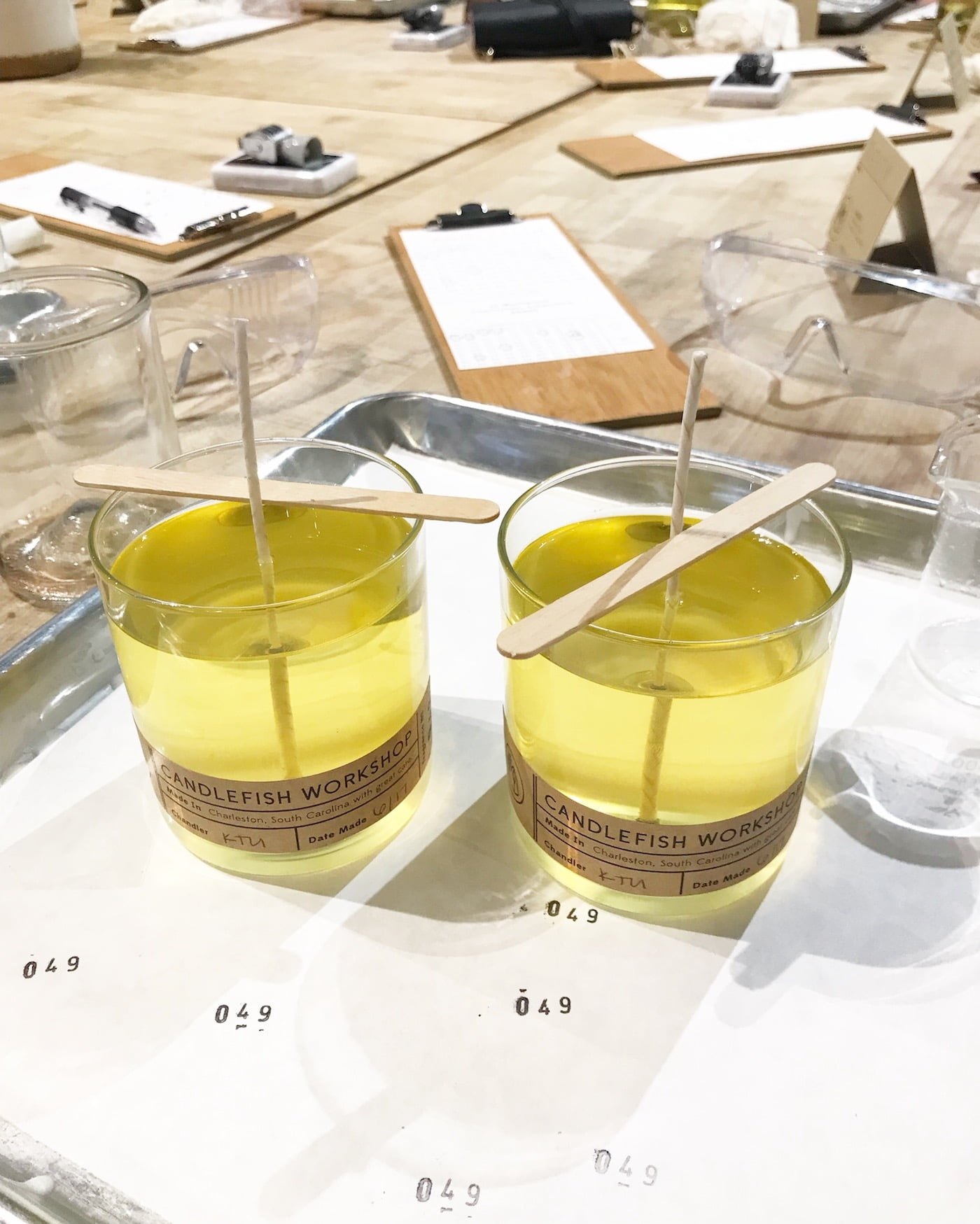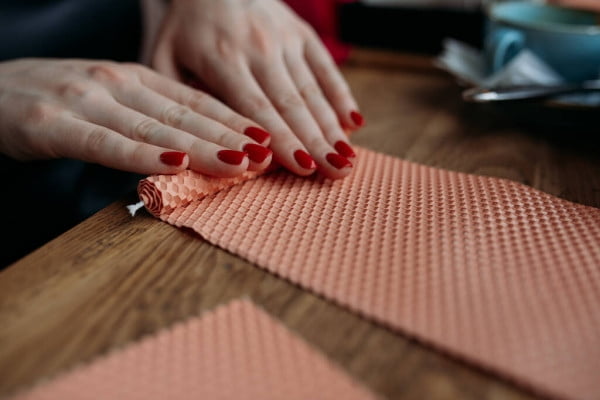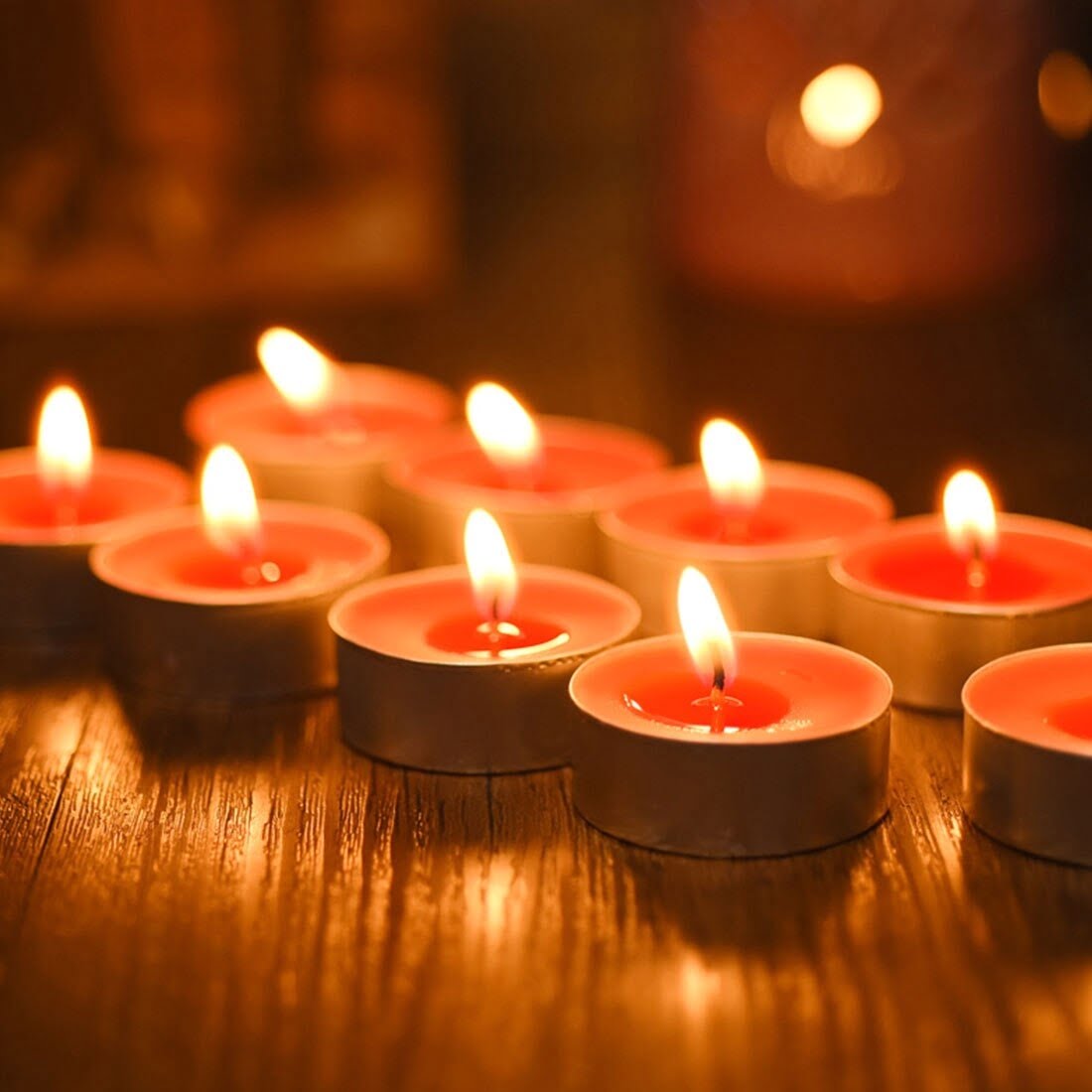Candle making is a popular craft that allows individuals to express their creativity while creating beautiful and fragrant candles. In recent years, there has been a growing interest in using natural dyes for this art form.
Natural dyes offer a more sustainable alternative to synthetic dyes, as they are derived from various natural sources such as plants, fruits, and spices. Not only do they produce stunning colors, but they also provide an eco-friendly and non-toxic option for enhancing the aesthetic appeal of homemade candles.
As the crafting community recognizes the importance of sustainability and environmental consciousness, the use of natural dyes in candle making has gained significant popularity. Many artisans and enthusiasts have started exploring the beauty and versatility of these organic colorants. With numerous benefits associated with their use, it’s no wonder why more people are opting for natural dyes in their candle-making projects.
Using natural dyes in candle making comes with several advantages. First of all, these dyes are non-toxic, which means that they are safe to burn around children and pets.
Additionally, natural dyes provide a sense of connectedness to nature and cultural heritage due to their long history of use in traditional dyeing practices around the world. By choosing natural dyes for candle making, crafters can create unique pieces that not only enhance the ambiance of a space but also reflect their commitment to sustainability.
When it comes to natural dyeing for candles, there is a wide range of sources that can be utilized to achieve various hues and effects. From vibrant plant pigments to earthy spices, each source offers its own distinct color palette.
Whether you prefer soft pastels or bold jewel tones, there is a natural dye out there waiting to transform your candles into works of art.Eager enthusiasts can delve into understanding how natural dyes differ from synthetic ones before beginning this artistic exploration.
The Basics of Natural Dyes
Natural dyes offer a beautiful and eco-friendly alternative for candle making. Understanding the basics of natural dyes is essential to utilize their full potential. In this section, we will explore what natural dyes are and how they differ from synthetic dyes, discuss their advantages, and delve into their rich history and cultural significance.
What Are Natural Dyes?
Natural dyes are colorants derived from various plant sources, such as flowers, roots, leaves, barks, and even insects. These colorants contain pigments that can be extracted and used to dye different materials, including candles. Unlike synthetic dyes that are created through chemical processes, natural dyes offer a more sustainable option as they come directly from nature.
The Advantages of Using Natural Dyes
Using natural dyes in candle making offers several benefits. Firstly, natural dyes are non-toxic and do not release harmful fumes when the candles are burned. This makes them a safer choice for both the environment and our health. Additionally, natural dyes are biodegradable and thus have a lower impact on the planet compared to synthetic alternatives.
Furthermore, natural dyes create unique colors that often have an earthy and organic appeal. They tend to age beautifully over time, adding character to your candles. Many crafters enjoy the unpredictability of working with natural dyes as they can produce subtly varied hues within the same dye bath.
A Brief History & Cultural Significance
The use of natural dyes can be traced back thousands of years across different cultures around the world. Ancient civilizations such as the Egyptians, Greeks, Romans, Chinese, and Indians all utilized plant-based materials for dyeing textiles and other items.
These early cultures recognized the beauty of nature’s pigments and valued its connection to their surroundings. Natural dyeing became intertwined with cultural practices such as religious ceremonies, traditional textiles, and symbolic associations. Today, the revival of using natural dyes in candle making allows us to connect with this rich history and incorporate it into our modern crafting practices.
Understanding the basics of natural dyes provides a solid foundation for successful candle making. From their origins as plant-based colorants to their advantages over synthetic options, natural dyes offer unique opportunities for crafters looking to create beautiful and sustainable candles.
Choosing the Right Natural Dye for Your Candles
When it comes to choosing the right natural dye for your candles, there are several factors to consider. The desired color outcome and compatibility with candle wax are two important aspects to keep in mind. Additionally, the source of the natural dye is also crucial as different plants, fruits, and spices can yield varying shades and effects.
One of the first things to consider when selecting a natural dye is the color outcome you desire for your candles. Different natural sources will produce different colors, so it’s essential to research and experiment to find the shade that suits your vision. For example, beetroot can provide a vibrant pink or red hue, while turmeric can yield a rich yellow color.
Compatibility with candle wax is another critical factor when choosing a natural dye. Some dyes may not mix well with certain types of waxes or may result in an uneven or dull color. It’s advisable to conduct small test batches to ensure that your chosen dye works well with your specific wax formulation.
| Natural Source | Resulting Color |
|---|---|
| Beetroot | Pink/Red |
| Turmeric | Yellow |
| Indigo | Blue |
| Sandalwood | Brown |
| Hibiscus Flowers/saffron | Red/Purple |
Once you have chosen a natural dye source, it is essential to extract and prepare the dye properly. The preparation method can affect the outcome of the color. Some dyes may require boiling or soaking in alcohol or water to extract the maximum pigment. It’s recommended to research specific extraction methods for each natural dye source to achieve vibrant and long-lasting colors in your candles.
Choosing the right natural dye for your candles allows you to create unique and visually stunning pieces. By considering factors such as desired color outcomes, compatibility with candle wax, and proper dye extraction techniques, you can ensure that your candles showcase the beauty of nature while creating a personalized touch in your crafting projects.
Achieving Vibrant Colors with Natural Dyes
Natural dyes are known for their subtle and earthy tones, but with a few techniques, you can achieve vibrant and eye-catching colors in your candles. Vibrant colors add an exciting and unique touch to your candle-making projects, making them stand out among store-bought alternatives. In this section, we will explore various techniques for enhancing the intensity and vibrancy of natural dye colors in candles.
The Importance of Mordants and Additives
One key factor in achieving vibrant colors with natural dyes is the use of mordants and additives. Mordants are substances that help to bind the dye molecules to the fabric or wax, allowing for better color absorption. Commonly used mordants for candle-making include alum, iron salts, and cream of tartar. Different mordants produce different shades, so it’s essential to experiment with various options to find the desired color outcome.
Another important additive is a fixative. Fixatives are used to prevent bleeding or fading of the dye color over time. Adding salt or vinegar during the dyeing process can act as natural fixatives and help improve color longevity in your candles.
Step-by-Step Instructions for Dyeing Candles
To achieve vibrant colors with natural dyes, follow these step-by-step instructions:
1. Prepare your natural dye: Extract and prepare your chosen natural dye according to its specific requirements. This may involve boiling plant materials or grinding spices to create a concentrated liquid or powder form.
2. Melt your candle wax: Prepare your candle wax by melting it in a double boiler or microwave-safe container until it reaches its melting point.
3. Add the natural dye: Once your wax has melted, add the desired amount of natural dye into the mixture. Start with a small amount first to achieve a lighter shade, then gradually increase until you reach the desired vibrancy.
4. Mix thoroughly: Stir the dye into the wax mixture using a wooden or heat-resistant spoon. Make sure the dye is evenly distributed throughout the wax to ensure uniform color.
5. Pour and cool: Carefully pour the dyed wax into your candle mold or container, making sure not to spill or mix different colors together. Allow the candle to cool and solidify completely before trimming the wick and enjoying your vibrant creation.
Experimenting with Natural Dyes
Achieving vibrant colors with natural dyes is an opportunity for creativity and experimentation. Consider combining various natural dyes to create unique shades or try layering different colors to achieve multi-tonal effects. You can also experiment with temperature variations during the dyeing process, as some dyes may produce different intensities of color at different temperatures.
Additionally, don’t be afraid to let your creativity shine through by trying unconventional techniques such as marbling or dip-dyeing. These techniques can result in stunning visual effects that make your candles truly one-of-a-kind.
By following these techniques and allowing yourself room for experimentation, you can achieve vibrant and captivating colors using natural dyes in your candle making. Let your imagination run wild, and have fun exploring the endless possibilities that natural dyes offer for creating beautiful personalized candles.
Natural Dye Combinations and Blending for Unique Candle Designs
One of the exciting aspects of using natural dyes in candle making is the ability to blend different colors together to create unique and personalized designs. By experimenting with various natural dye combinations, crafters can achieve breathtaking color effects that are not possible with synthetic dyes alone.
When it comes to blending natural dyes, the possibilities are endless. Here are a few popular combinations that you can try:
- Blueberry and Beetroot: Combine blueberry and beetroot dyes to create a stunning deep purple shade. This combination works well for creating candles with a rich, luxurious look.
- Turmeric and Paprika: Blend turmeric and paprika to achieve a warm golden shade reminiscent of autumn sunsets. This combination is perfect for creating cozy, inviting candles.
- Spinach and Spirulina: Mix spinach and spirulina powders for a fresh green hue that evokes nature’s lushness. This combination is ideal for crafting candles with a calming and rejuvenating feel.
- Hibiscus and Rose Petals: Combine dried hibiscus flowers with crushed rose petals to create a vibrant pink color perfect for romantic or feminine-themed candles.
It’s important to note that when blending natural dyes, it’s advisable to experiment in small quantities first until you achieve the desired color intensity. Remember that natural dyes can vary in their shades depending on factors such as plant variety, extraction technique, and concentration.
To blend natural dyes effectively, follow these steps:
- Begin by extracting each dye separately according to the instructions provided for each source.
- Start with small amounts of each dye extract and mix them together gradually until you reach your desired color.
- Keep track of your proportions so that you can recreate the same color in larger batches if needed.
- Once you’ve achieved your desired blend, mix it thoroughly before adding it to your melted candle wax.
The key to successful blending is experimentation and creativity. Don’t be afraid to mix different natural dye sources, adjust proportions, or even add a touch of a complementary synthetic dye if desired. The possibilities for creating unique and visually stunning candles are truly limitless when it comes to natural dye combinations and blending.
Troubleshooting Common Issues with Natural Dyeing
Natural dyeing can sometimes present challenges, but with a few troubleshooting tips, you can overcome common issues and achieve consistent and desirable results in your candle making. Here are some common problems that may arise when using natural dyes for candle making and how to address them:
- Color Bleeding: If you notice that the color from your natural dye is bleeding onto the surface of the candle or staining your hands when you touch it, there are a few possible causes. Firstly, make sure you are using enough mordant in the dye bath to help fix the color onto the wax.
Additionally, consider using a fixative after dyeing to seal in the color and prevent bleeding. You can use products like alum or vinegar as fixatives. - Uneven Dyeing: Uneven color distribution on candles can be frustrating, but there are ways to achieve more uniform results. One common reason for uneven dyeing is inadequate agitation during the dyeing process. Make sure to gently stir or agitate the candles while they are in the dye bath to ensure even absorption of color. Another technique you can try is pre-soaking your candles in warm water before dyeing to promote better penetration of the dye.
- Fading Colors: Natural dyes may fade over time due to exposure to light and air. To minimize fading, it’s important to store your dyed candles away from direct sunlight and excessive heat. Consider adding UV inhibitors like titanium dioxide or antioxidants like Vitamin E oil into your wax blend to help preserve colors for longer periods.
- Inconsistent Shade: If you’re having trouble achieving consistent shade across multiple batches of candles or even within a single batch, it could be due to variations in natural dyes themselves. Plants and other natural sources may produce different intensities of color depending on factors like growing conditions and harvest time. To overcome this issue, try experimenting with different quantities of dye material or consider sourcing your natural dyes from reputable suppliers who provide standardized products.
Remember, troubleshooting is part of the learning process, and don’t be discouraged if you encounter some challenges along the way. With practice and experimentation, you will develop your own techniques to achieve the desired results with natural dyes in candle making. Embrace the beauty of natural dyes and enjoy the unique colors and effects they can bring to your candles.
Exploring Natural Dyeing Techniques and Experiments
Natural dyeing techniques offer endless possibilities for exploring creativity and adding unique touches to your candle-making projects. In this section, we will introduce various dyeing techniques that can be used with natural dyes, as well as share creative ideas for experimenting with different effects. Whether you’re looking to achieve a dip-dye effect, create a tie-dye pattern, or experiment with ombré colors, there is a technique that will suit your creative vision.
One popular technique is dip-dyeing, which involves immersing a portion of the candle into the dye solution to create a gradient effect. This technique works particularly well with cylindrical or tapered candles. To achieve this effect, prepare multiple containers of dye solutions in different concentrations.
Start by dipping the bottom portion of the candle into the container with the darkest concentration of dye and gradually work your way up by dipping it into lighter concentrations. Repeat this process until you achieve your desired color gradient.
Another technique that creates stunning results is tie-dyeing. Similar to fabric tie-dyeing, this technique involves tying off sections of the candle with rubber bands to create patterns or designs. Once tied, immerse the entire candle in a large container filled with the dye solution of your choice.
Allow the candle to sit in the dye bath for an extended period to absorb the colors deeply. After removing it from the bath, carefully remove the rubber bands to reveal your unique tie-dye design.
For those who love ombré effects, layering and gradual blending techniques are perfect choices. Begin by pouring melted wax into individual containers at different temperatures and mix each one with varying amounts of natural dye.
For example, start with one container containing melted white wax mixed with a small amount of red natural dye at low temperature, then move on to another container containing melted white wax mixed with a larger amount of red natural dye at higher temperature. Pour the layers one by one, allowing each layer to cool and solidify before adding the next, to create a gradual transition of colors from light to dark.
These techniques are just a few examples of the endless creativity you can explore with natural dyes in candle making. Embrace experimentation and don’t be afraid to try new ideas. Marbling, layering, and even combining different dye techniques can lead to beautiful and unique results. Whether you’re creating candles for personal use or as gifts for loved ones, utilizing these techniques will make your candle-making projects truly stand out.
| Dyeing Technique | Description |
|---|---|
| Dip-Dyeing | Immersing a portion of the candle into dye solutions of different concentrations to create a gradient effect. |
| Tie-Dyeing | Tying off sections of the candle with rubber bands before immersing it in a dye bath to create unique patterns or designs. |
| Layering and Blending | Pouring melted wax at different temperatures mixed with varying amounts of natural dyes to achieve gradual color transitions. |
Conclusion
In conclusion, the use of natural dyes in candle making offers a range of benefits and possibilities for crafters. The increasing popularity of natural dyes among the crafting community is a testament to their beauty and versatility. Not only do natural dyes provide vibrant colors, but they are also non-toxic and eco-friendly, making them a great choice for those who prioritize sustainability.
Throughout this article, we have explored the basics of natural dyes, discussed factors to consider when selecting the right dye for your candles, and shared techniques for achieving vibrant colors. We have also delved into the exciting world of natural dye combinations and blending, encouraging creativity and experimentation in candle design.
While using natural dyes may present some challenges, such as issues with color bleeding or fading, we have provided troubleshooting tips to help readers achieve consistent and desirable results. Additionally, we have introduced various dyeing techniques that can be used with natural dyes and shared creative ideas for experimenting with different effects in candle making.
In summary, embracing the beauty of natural dyes in candle making allows crafters to create unique and environmentally friendly candles. By exploring different sources of natural dyes and experimenting with blending techniques, individuals can personalize their creations even further. Whether you are a seasoned crafter or just starting out, embracing natural dyes opens up endless possibilities for creating stunning and eco-conscious candles.

Welcome to my candle making blog! In this blog, I will be sharing my tips and tricks for making candles. I will also be sharing some of my favorite recipes.





